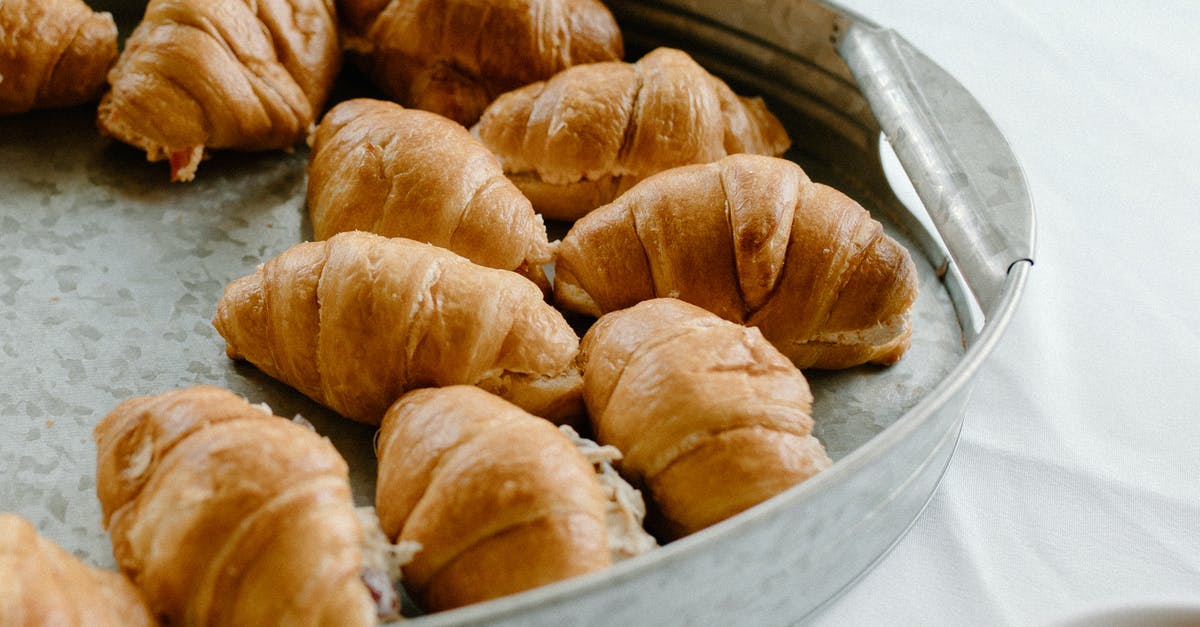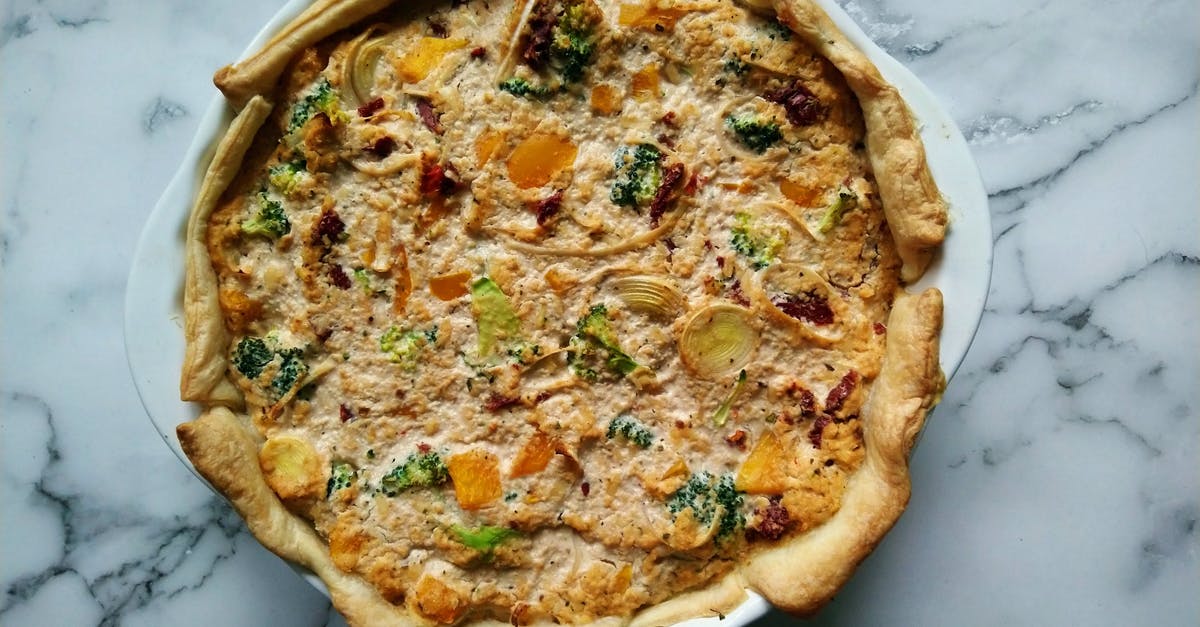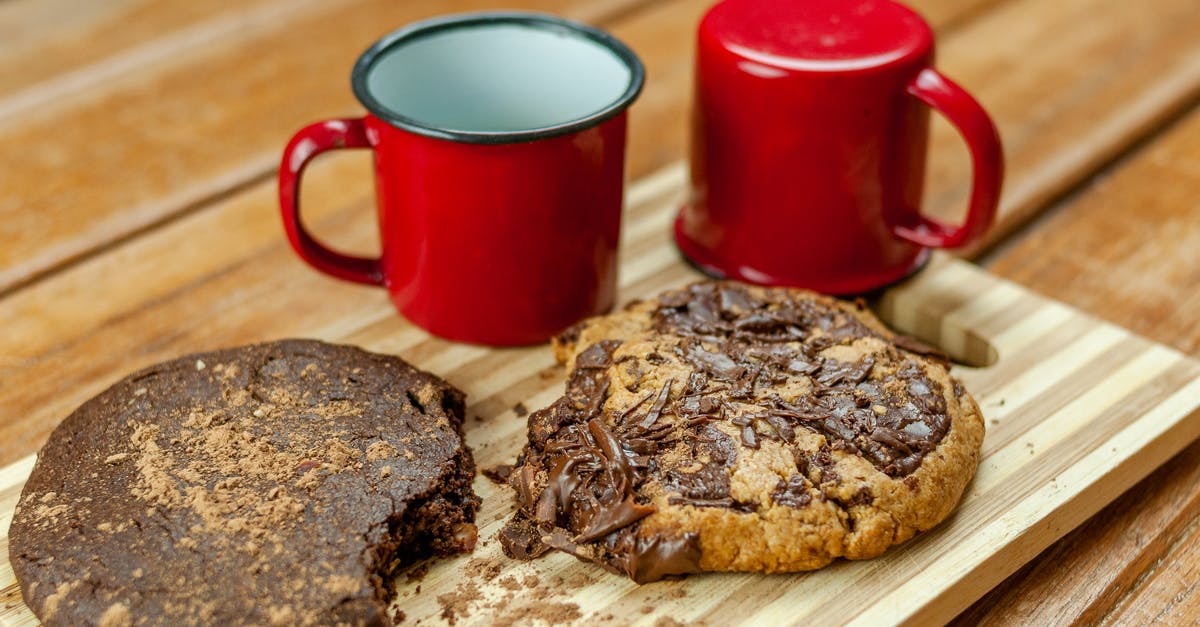Why are quiches baked in fluted tins?

Is there any particular reason why quiches are usually baked in a fluted tin, rather than in a regular straight-sided cake tin?
Best Answer
TL;DR Quiche pans are fluted because quiche crusts are ruffled.
Quiche crusts are ruffled for the same geometric reason as muffin liners and some coffee filters are ruffled. Try fitting an inelastic disc into a cylinder, covering the bottom and sides, and the disc builds ruffles on its sides. Since the ruffles of the crust are somewhat fragile, they are best supported within flutes.
This is one of the cases (much rarer than most people think) where it has an objective advantage, as opposed to randomly developed tradition.
Quiches are made with a crust of shortbread or flaky savory pie dough. This dough is not very friendly in handling. It tends to crumble rather than stretch, sticks everywhere to the point of smearing, and has low tolerances with respect to temperature, mechanical stress, and others.
Imagine you have just rolled out your crust - which is hopefully all in one piece, evenly thick, not stuck to your counter or to your rolling pin, not so cold as to crumble from stiffness and not so warm as to smear or lose its flakiness, and circular (as opposed to a map of the Scandinavian peninsula complete with fjords). Getting all these at once is already an achievement which requires quite a bit of skill and/or luck. Now you manage to lift your crust from the counter and place it in the pan.
The crust is now lying such that its center coincides with the center of the pan. The edges are draped over the sides of the pan, so there is a gap between the crust and the pan. You now start fitting the crust into the pan by lifting the edge in one point, and gently stroking the radius pointing to that point from the center to the pan wall, such that the crust lays flush on the bottom of the pan. At that place where the crust meets the pan sides, both the crust and the pan have the same radius.
Now your crust is a bent disc. Let's say your pan is 3 cm deep and has straight, non-fluted sides. Then, if you have the crust follow the side in one point, the radius of the crust at the upper edge of the pan is 3 cm larger than the radius at the same point in the bottom of the pan. Choose a next point 1 cm further the circumference of the pan and also press the crust there. The arc of the pan between the two points will have a 1 cm span - but as the crust has a larger radius, its arc at that place is longer! Basically, when you try to bend the crust to go up the sides of the pan, it ruffles. And you have no elasticity to work with to somehow make the crust get together on top or stretch on the bottom - if you try, it tears or crumbles. You also can't just fit the ruffles beside each other - you can try, but their shape will suffer a lot during baking, if they don't break apart under pie weights during prebaking. If they survive, they will be underbaked because of their thickness.
When you have a fluted pan, the troughs of the fluting take in the ruffles of the crust. You now have a single-thickness crust everywhere without stretching, tearing, or whatever. It bakes properly and doesn't have any problems with geometry. Also, it looks pretty.
Given all of the above, I am pretty sure it was a major factor in the design becoming popular.
For those who have trouble imagining it visually, I found a video which shows the process pretty well. Interestingly, this baker strengthens the crust by folding it double and then smushing it into the flutes, something I have never tried.
Pictures about "Why are quiches baked in fluted tins?"



Quick Answer about "Why are quiches baked in fluted tins?"
TL;DR Quiche pans are fluted because quiche crusts are ruffled. Quiche crusts are ruffled for the same geometric reason as muffin liners and some coffee filters are ruffled. Try fitting an inelastic disc into a cylinder, covering the bottom and sides, and the disc builds ruffles on its sides.Why are tarts fluted?
The wavy edges on a tart pan's rim, called flutes, give the finished tart its professional, polished appearance. As the tarts cooled, we noticed that the one that was baked in a pan with sharply fluted sides looked best.What is a quiche pan called?
Smaller ones are sometimes called \u201ctartlet pans.\u201d Unlike pie pans, quiche pans have straight edges as opposed to sloping ones. The straight side allows more crust and filling, and gives a professional look. The edges of the sides are often fluted, to make a fluted-edge crust.Is a tart tin the same as a quiche tin?
Round tart pans are also sometimes referred to as quiche pans. With their upright sides, you get more filling into the shell and a neater, more regular slice of quiche when serving. Quiche is also sometimes baked in a ceramic or fired clay pan that resembles a tart pan but that doesn't have a removable bottom.Beth's Mini Quiche Recipe
More answers regarding why are quiches baked in fluted tins?
Answer 2
A quiche is simply a French, savory, custard based tart. Tarts are typically "short" based pastries, like a pie crust. They are usually prepared in a shallow tart pan with either angled, straight, or fluted sides. Whether or not it is "typical" to prepare them in fluted tart pan is debatable. The edge design of the cooking vessel has little influence on the result, other than visual appeal.
Sources: Stack Exchange - This article follows the attribution requirements of Stack Exchange and is licensed under CC BY-SA 3.0.
Images: Tara Winstead, Rozemarijn van Kampen, Dayvison de Oliveira Silva, Dayvison de Oliveira Silva
